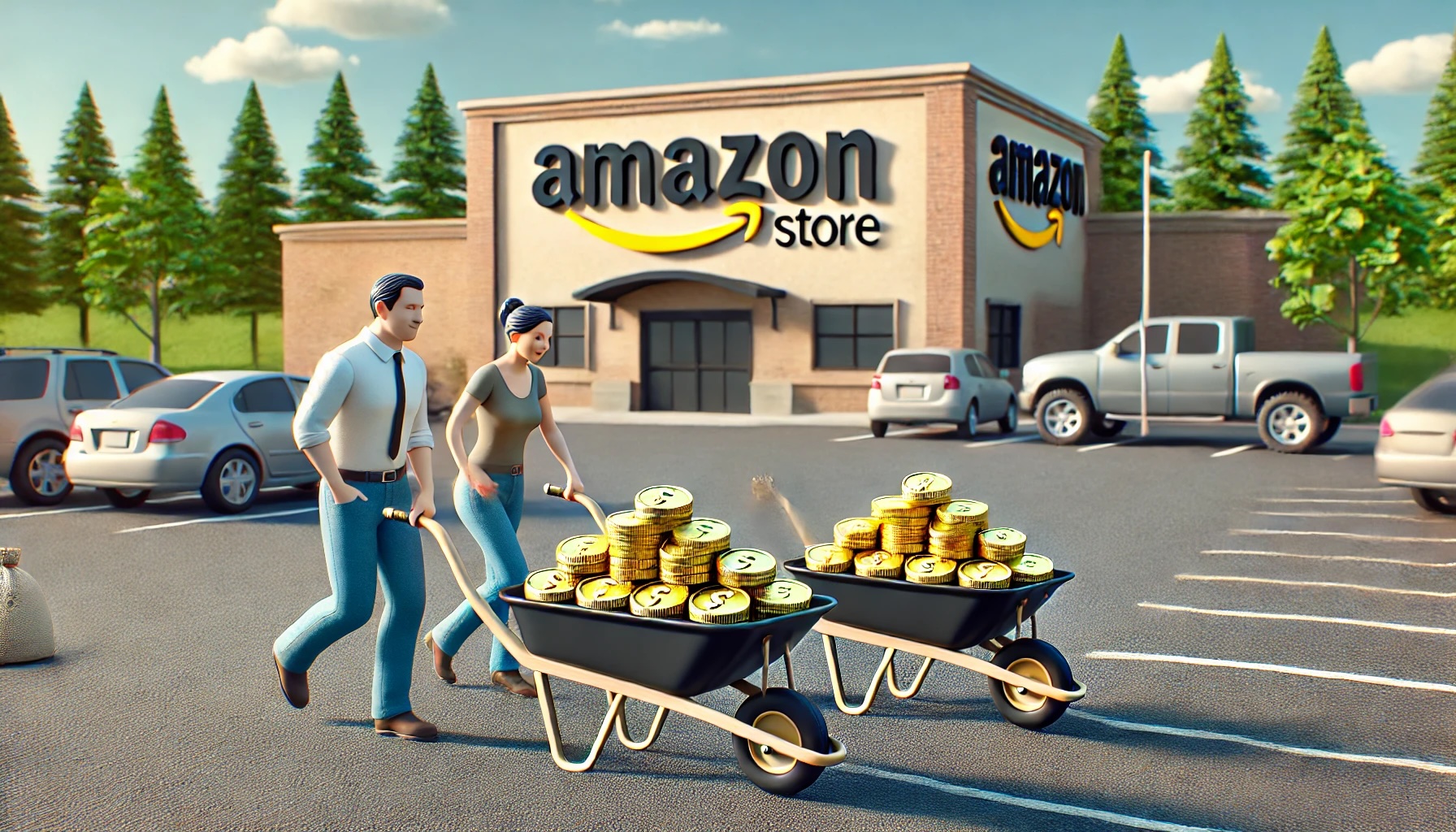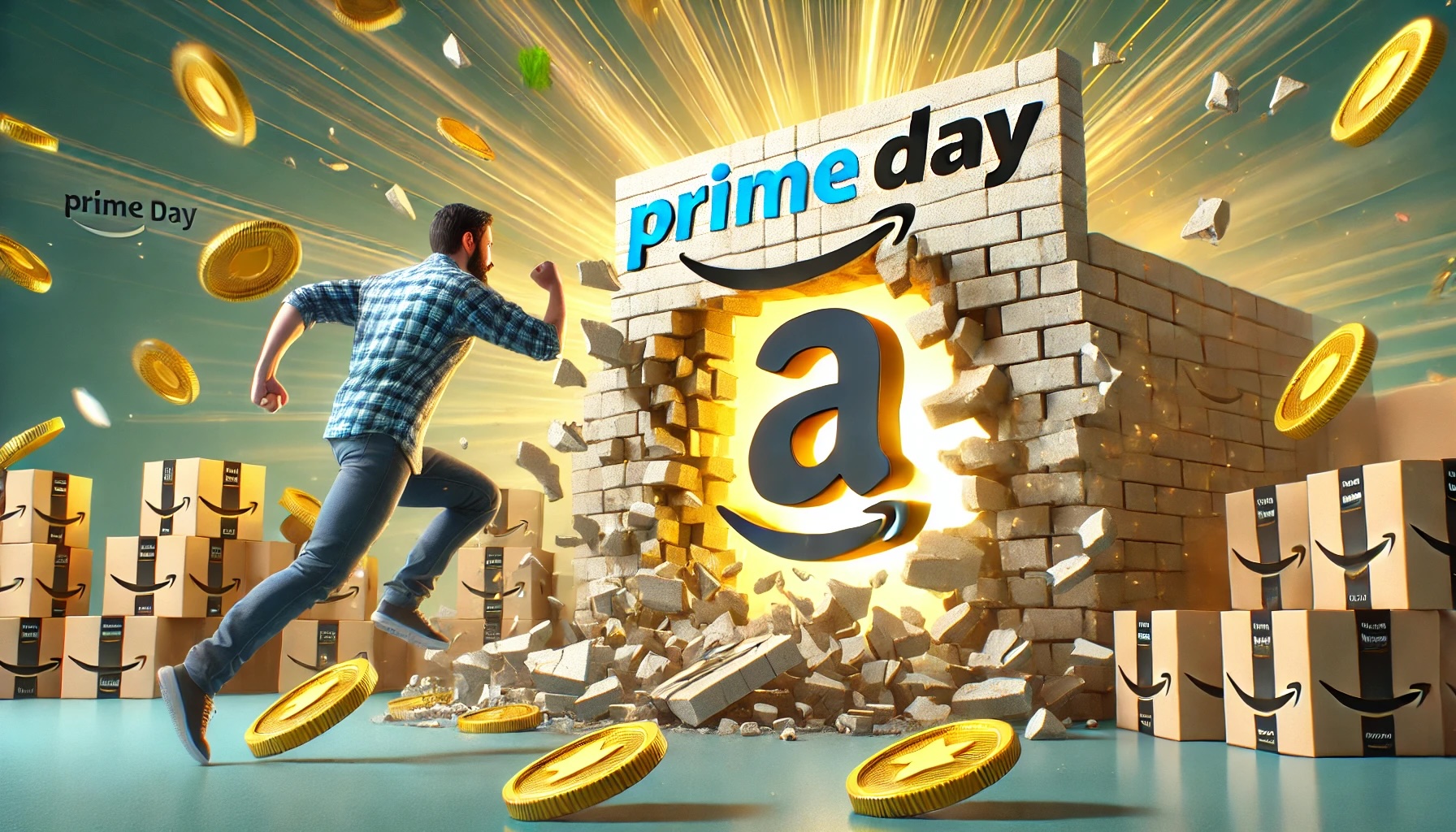Is Amazon PPC Advertising Worth It In 2024?
Discover Amazon advertising strategies to give you a competitive edge, boost your profitability, and conquer your niche in 2024.

As the global leader in sales, nothing matches Amazon’s ecommerce footprint. Unfortunately, it also means that without a solid marketing strategy in place, it’s difficult to stand out.
It’s a big reason why many experienced sellers reach out to an Amazon management agency. If you’re looking to get more from your Amazon PPC efforts, hiring an expert is your best bet.
An Amazon PPC management agency works with you to optimize your ad campaigns, decrease your advertising cost of sales (ACoS), and increase your ROI-all while taking advantage of Amazon’s highly-effective advertising services. If you sell on Amazon, you can’t afford not to be taking advantage of Amazon management.
The Benefits of Advertising on Amazon
The difference between people browsing for a product on Google (or Safari) and people browsing on Amazon is the degree of buyer intent.
People browse on Google. Shoppers spend time on Amazon when they’re ready to make a purchase.
Amazon advertising lets you display your products to people ready to buy, giving you an advantage over other platforms. This means you can reach a specific audience that is more likely to make a purchase. It can help increase your sales by targeting the right customers, give your products more visibility, and help you stand out from competitors.
Is Amazon advertising worth it in 2024?
The short answer is yes, absolutely!
The reason is simple. Using pay-per-click ads on a platform where millions of buyers go when they’re ready to make a purchase just makes sense.
Amazon PPC Ads Get Your Products Seen
A huge benefit of Amazon PPC ads is that they allow you to promote your products in a highly visible location.
Sponsored ads target shopping queries or products, ensuring that your ads show up when customers are searching using matching terms. These ads can be placed strategically within search results or on product detail pages, enhancing the likelihood of catching the shopper’s attention at critical moments in their buying journey.
Whether a customer is searching for a specific product category or browsing similar products, sponsored ads help position your offerings prominently, driving more traffic to your listings and increasing the chances of conversion.
With an Amazon ad, you use keywords to improve your chances of showing up for a specific search term. That means that your product appears more often based on your target keywords and phrases.
Sponsored ads are cost-per-click (CPC), so you only pay when customers click your ads. You can choose how much to bid per click and set your own budget.
Amazon has over 300 million active customer accounts worldwide. And, you’re never quite sure where those potential shoppers might be in the buying process.
This is where Amazon advertising really stands out. They are designed to help you use your campaign to reach customers at every stage of their journey.

Amazon Ad Products
Amazon Sponsored Product ads appear on Amazon and help promote specific products in shopping results and relevant product pages. It’s simple. When a customer clicks an ad, they are directed to the corresponding product page.
Amazon Sponsored Brand ads appear on Amazon and allow you to create ads that include multiple products, along with your brand logo and a custom headline. Prospective shoppers are sent from the Sponsored Brand campaigns to a selection of your products.
Amazon Sponsored Display ads are a versatile advertising tool that allow you to retarget potential customers who have shown interest in their products or similar categories. This enhances brand visibility and drives conversions. Display ads offer customizable campaigns, expanded reach, and ease of use, supported by detailed reporting to optimize performance.
Keywords are King
Keywords are the terms a person enters into a search with their desired outcome in mind. A good keyword strategy will put your product squarely in the sights of your ideal buyers.
With Amazon advertising, users target products through the use of keywords (including negative keywords). You can specify Broad Match, Phrase Match, and Exact Match.
Broad Match: These types of keyword results are more general and are cheaper per click. However, they may lose relevance due to the general nature of the terms. Utilizing a long-tail version of a broad keyword is a great strategy to keep your bid cost low while expanding your brand exposure. The caveat is that these broad types aren’t highly converting, so you need to utilize a more specific keyword strategy for better conversions.
Phrase Match: This type of keyword search is more specific than a broad search and is more targeted for the potential customer’s search results. If you sell laptops, a phrase might be “Apple MacBook Laptop” to show what is closer to the search a person is conducting.
Exact Match: With exact match type ads, your results will only show if the customer matches their search terms exactly with your keyword phrase. For example, if you’re selling laptops and your exact match terms are “Apple MacBook Pro 2024 Laptop,” your ad will only show results that have that exact phrase.

The Power of Long-Tail Keywords
Long-tail keywords are highly specific and often longer phrases that users search for when they are closer to making a purchase or seeking detailed information. Unlike broad keywords, which are shorter and more generic (e.g., “laptop” or “running shoes”), long-tail keywords focus on niche markets and detailed queries (e.g., “best budget laptop for graphic design 2024” or “women’s waterproof trail running shoes size 8”).
These keywords tend to have lower search volume but higher conversion rates because they capture users with clearer and more precise intent, facing less competition and often resulting in more cost-effective advertising.
Negative Keywords Increase Relevancy and Save Money
Instead of ranking for a search term, “negative” keywords help you avoid showing up for the wrong queries.
Negative keywords are an important element of effective Amazon PPC strategy. By excluding irrelevant terms that do not align with your product offerings, you can significantly improve the precision of your ad targeting. This means your ads are shown to a more relevant audience, increasing the likelihood of conversions while reducing wasted ad spend.
For instance, if you sell high-end running shoes, adding “cheap” as a negative keyword ensures that your ads won’t appear in searches looking for budget options. This strategic filtering helps you avoid clicks from shoppers who are unlikely to purchase your premium products, thereby optimizing your advertising cost of sales (ACoS) and improving your return on investment (ROI).
Implementing negative keywords effectively can lead to higher click-through rates (CTR), better ad placement, and ultimately, increased sales. Negative keywords are a critical component of a well-calibrated Amazon PPC campaigns. They help make sure that your advertising efforts are both cost-effective and highly targeted.
Amazon PPC Campaign Strategies
With Amazon PPC advertising campaigns, you can opt to run a manual campaign or use an automatic campaign to drive traffic to your product listing.
Manual targeting allows you to control the type of keywords and phrases your ad campaign includes, allowing you better control of cost-per-click and focusing on only those key terms that are converting with you.
With automatic targeting, you can have Amazon set up ad campaigns and test if there are additional terms and phrases you should consider in your manual ads. This strategy is a great way to determine your higher-converting keywords without having to do the work of testing each one.
By utilizing automatic targeting with your ad group, you can set a smaller budget for the ads and see what converts before incorporating those terms into your ads and product descriptions. That will save you a lot of time and money on experimentation and testing.

ACoS – Advertising Cost of Sale and Other Performance Metrics
It’s important to analyze your Amazon Advertising Cost of Sale and iterate your campaigns for better efficiency.
The way the ACoS is calculated is ad spend divided by ad revenue multiplied by 100 (ACoS = ad spend/ad revenue x 100). This data gives you better insights into your ads performance and conversions toward sales to allow you greater control of your ad campaigns.
Put in layman’s terms, your ACoS is a ratio of how much you spend on ads versus the amount of money you make in return. You ultimately want a low ACoS, which means that you’re earning a lot more than you’re paying in ad costs.
Your ACoS will allow you insight into how effective your ads are compared to competitors, but the metric of Return On Ad Spend (ROAS) gives you data on how profitable your ad campaigns have performed.
To calculate your ROAS, you take your ad spend and divide it by your ad revenue (ROAS = ad spend/revenue).
Fine Tuning Your Amazon Ad Campaigns
When it comes to ACoS and RoAS, utilizing these data points and the type of keywords you are using in your ads and product descriptions allows you to focus your ad campaigns much more precisely than other ad platforms.
Amazon’s automatic targeting allows you to limit the cost associated with traditional testing and experimentation to help you better strategize the keywords you want to target in your campaigns.
Finally, the flexibility to adjust your keyword targeting using these data points allows you to adapt your ad campaigns and product listings to optimize their performance.
Whether it’s Amazon Sponsored Product, Brand, or Video ads, this optimization strategy will save you considerable time and money in your marketing while testing higher converting keywords. It’ll also direct significantly more traffic to your Amazon Store.
How Canopy Management Can Help
Canopy’s PPC management experts can help you to build an effective strategy that aligns with your unique business needs. Canopy’s Amazon marketing services will help you get more from your digital advertising so you can do more for your business.
If you have any additional questions, reach out to our pros and get started on maximizing your ad spend with Amazon PPC advertising.
Turns out that when you combine the massive experience of Canopy’s Amazon Advertising Experts with smart tools and tech, you get industry-leading results like this:
- 84% Average Year-Over-Year Profit Growth for Our Partners
- 2.7 Billion in Revenue Managed
- 99.1% Partner Retention Rate
Canopy Management is a full-service marketing agency for Amazon and Walmart sellers. Our team consists of former Amazonians, multi-million dollar sellers, and award-winning experts.
When you consider the many ways that Canopy Management can help you grow your business, you’ll see why selling on Amazon is much easier “under the Canopy.”
- Strategic Growth Planning
- Listing Copywriting Optimization
- Listing Photography
- Product Videography
- Advertising Management
- Customer Service
- Demand Side Platform (Amazon DSP)
- Amazon Posts
- Full Service Management
- Amazon Review Aggregation


